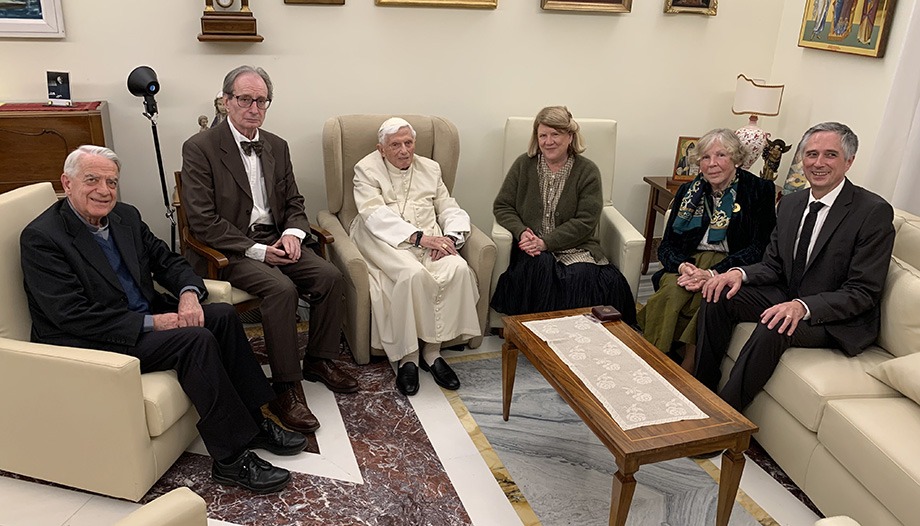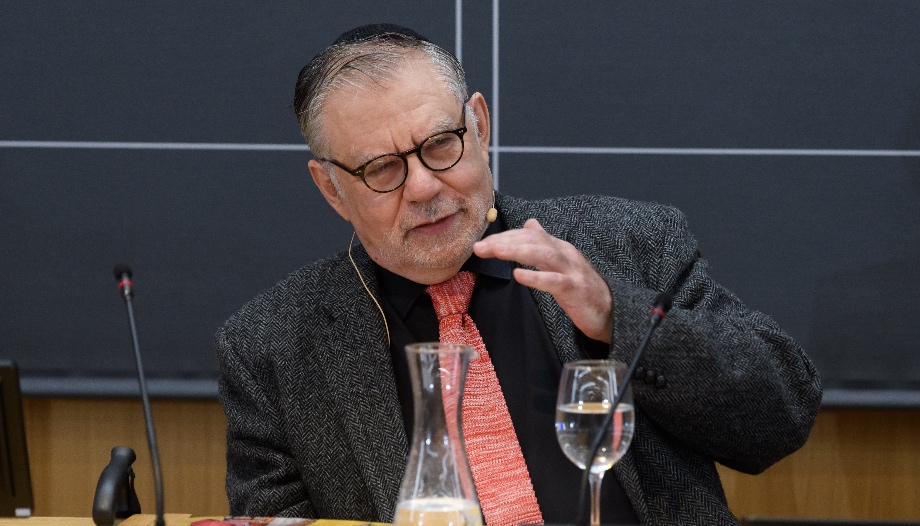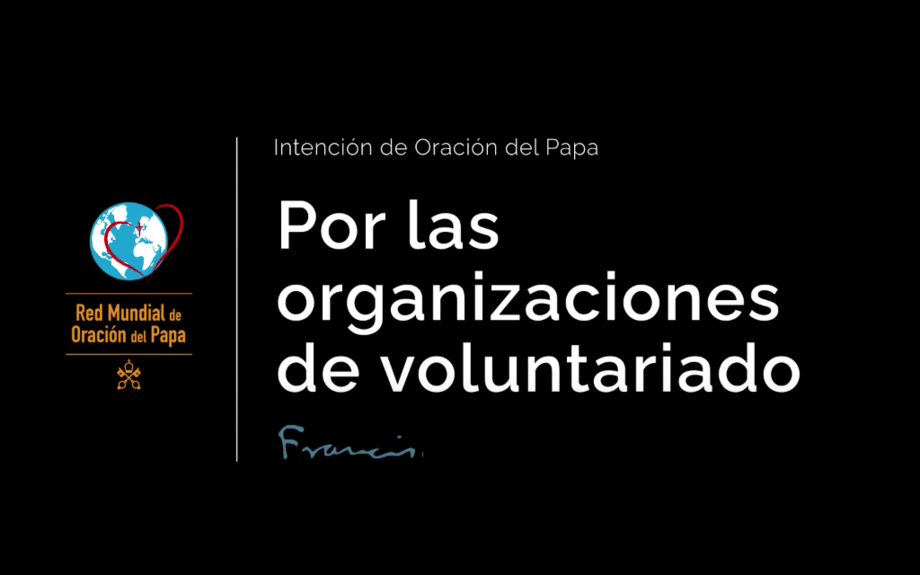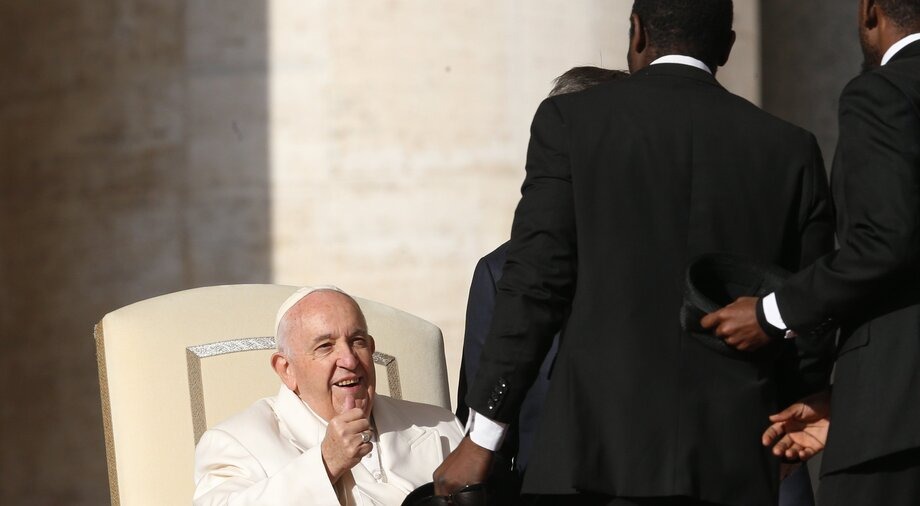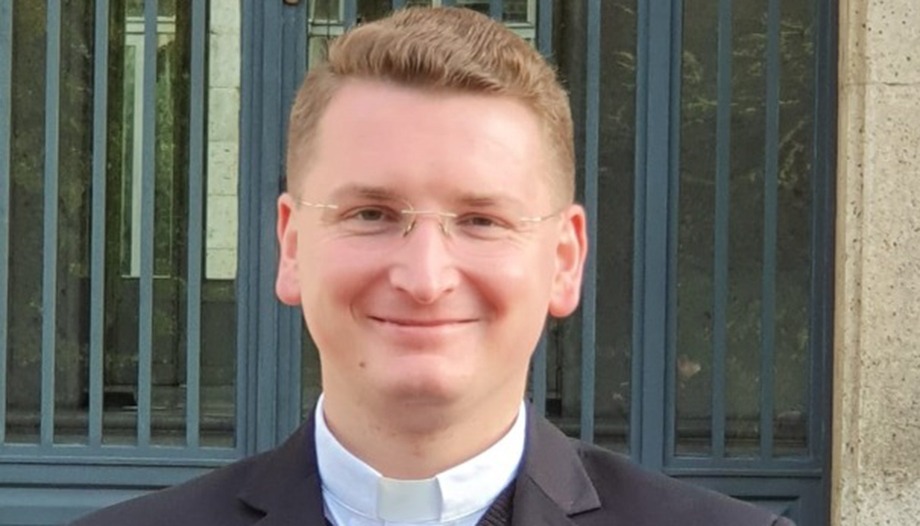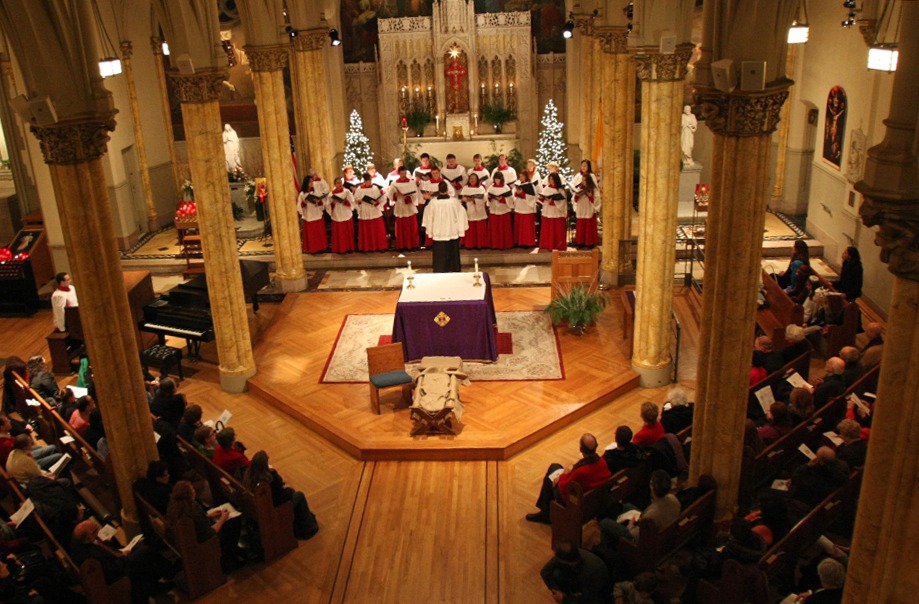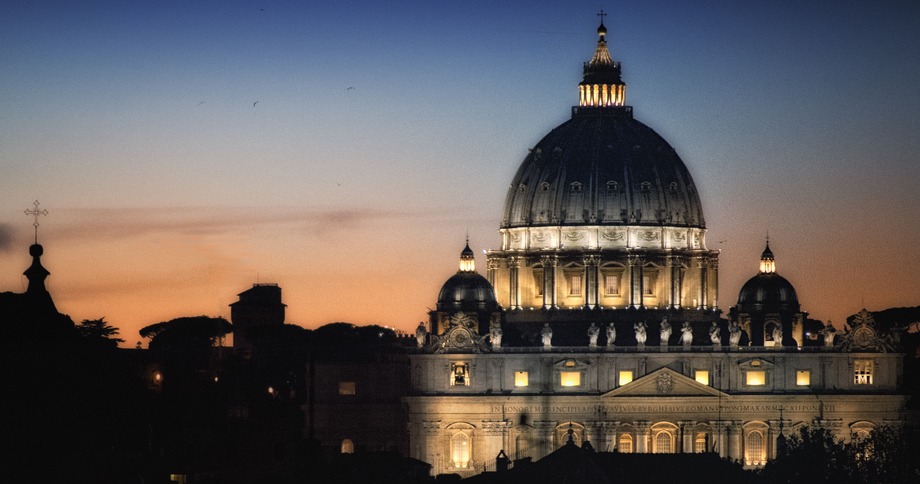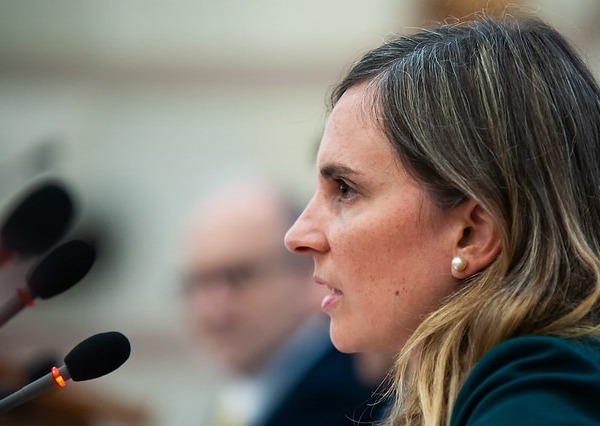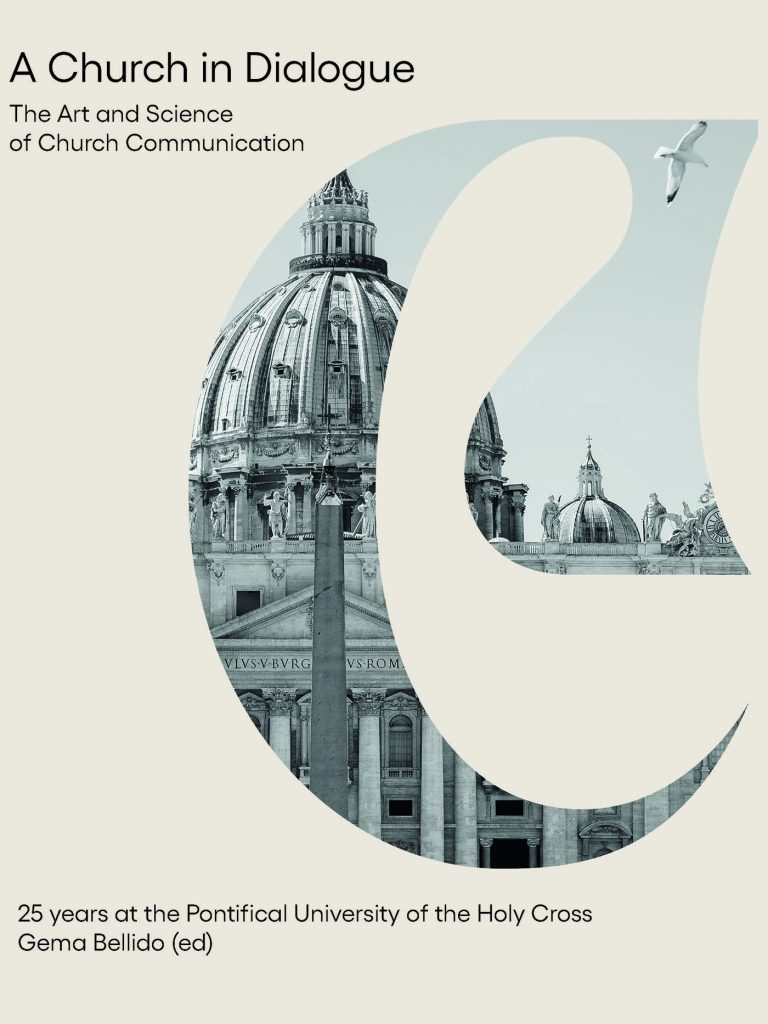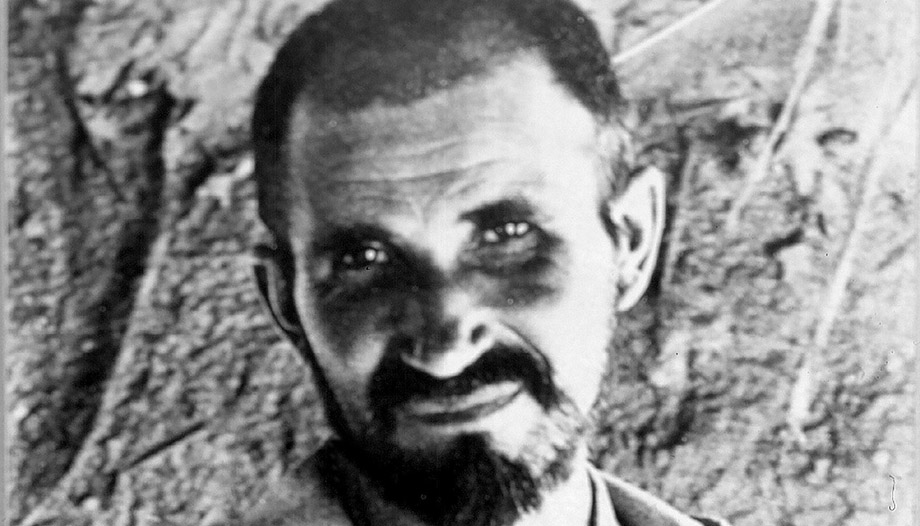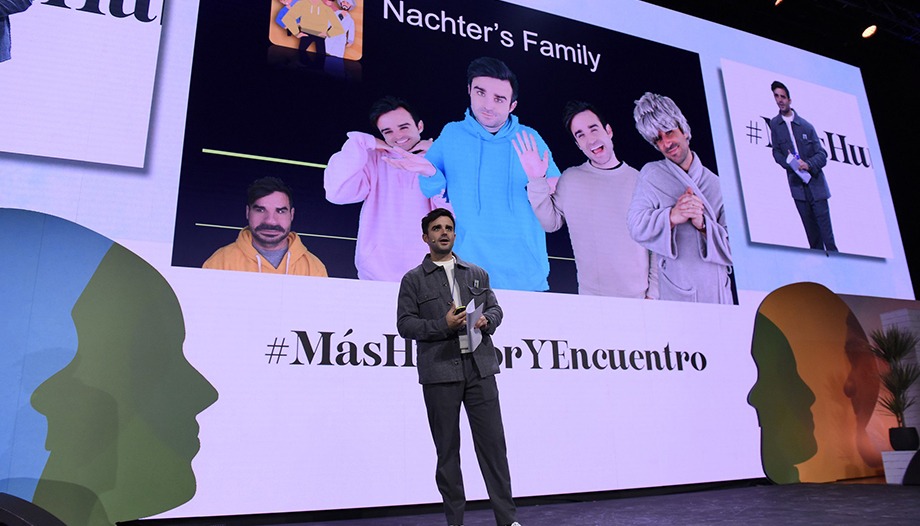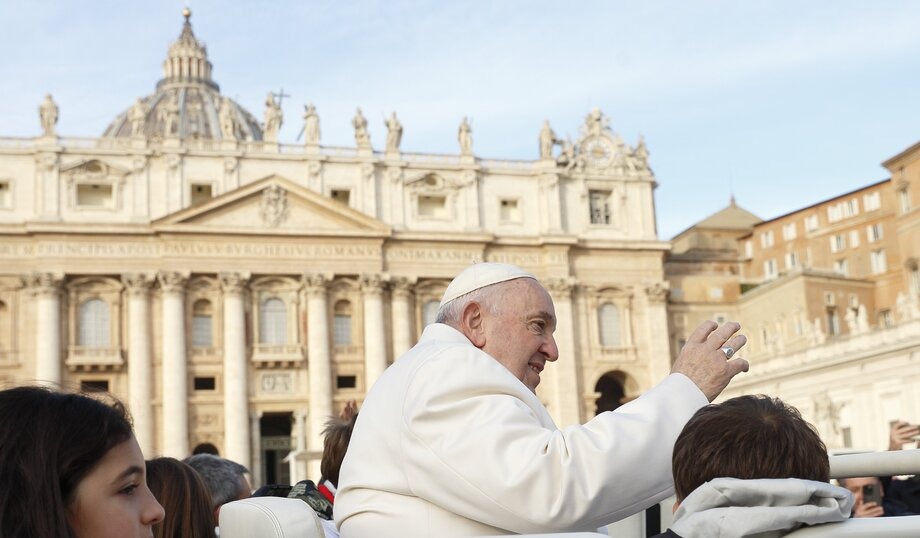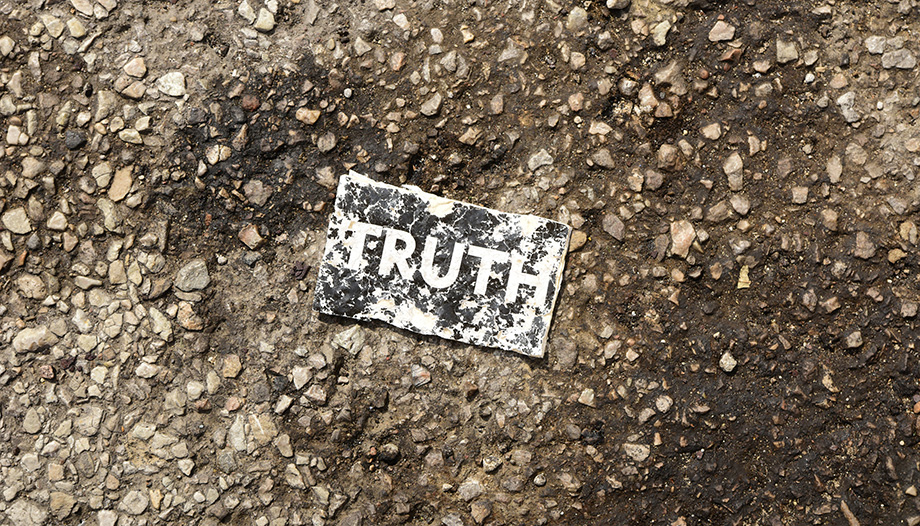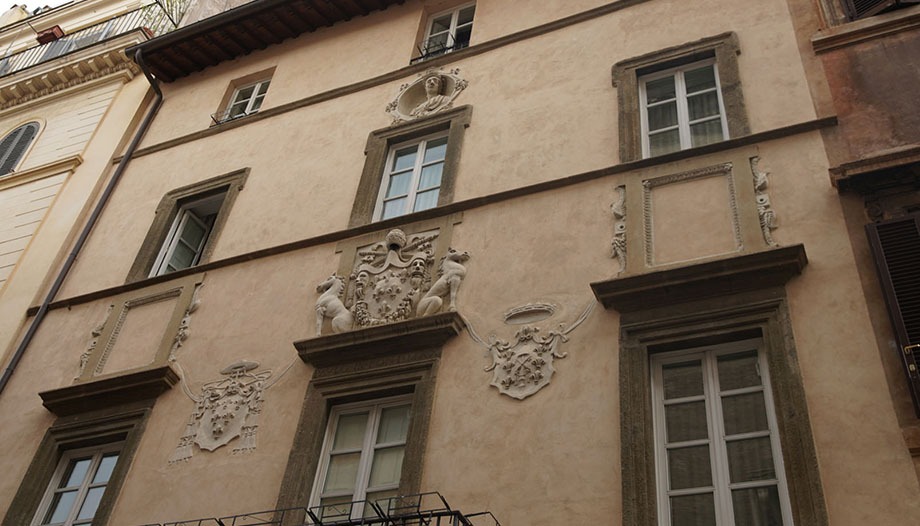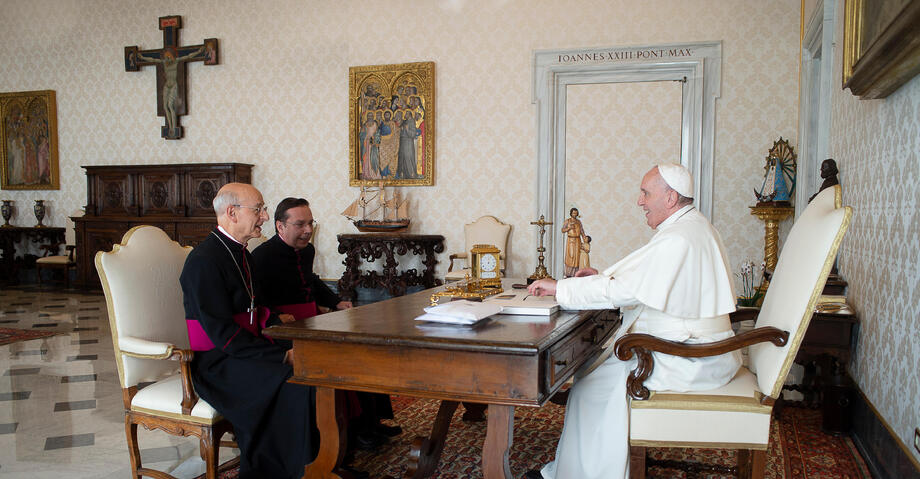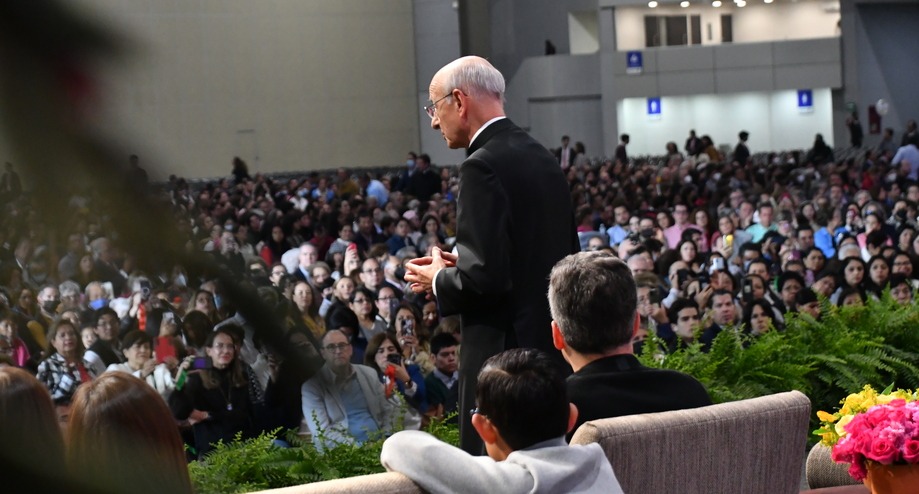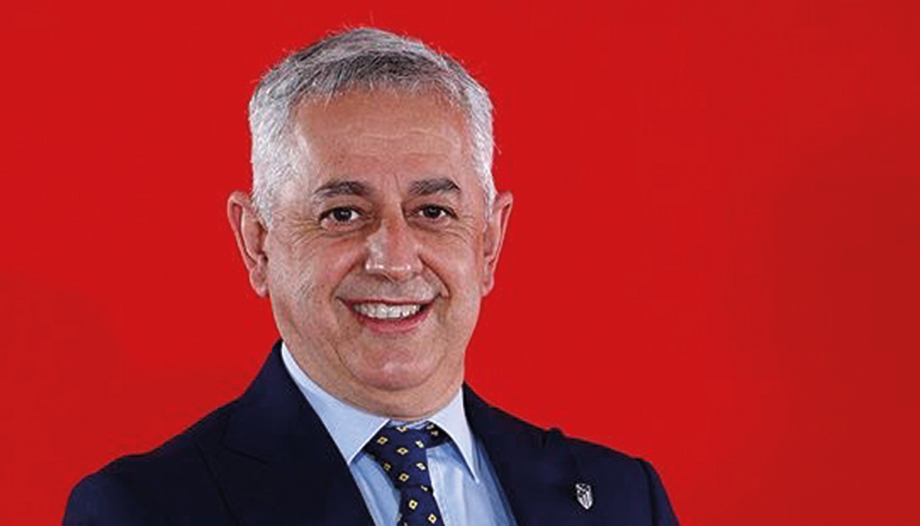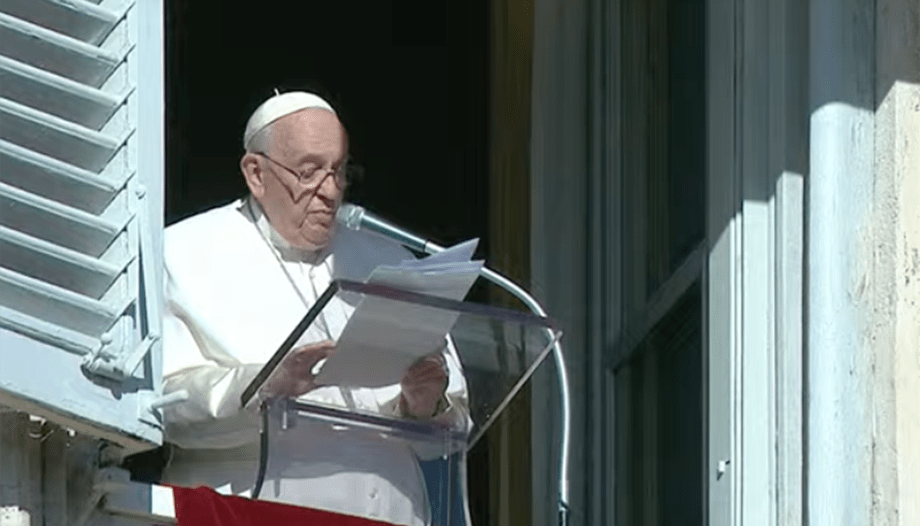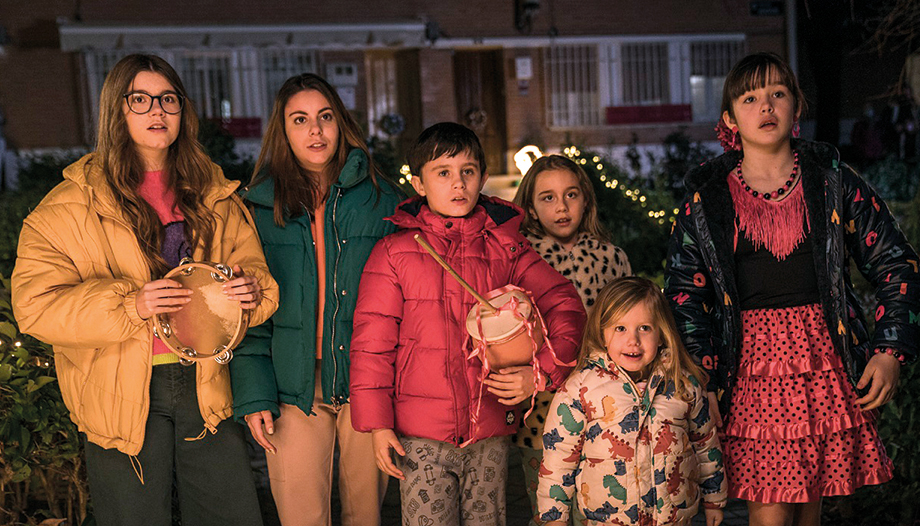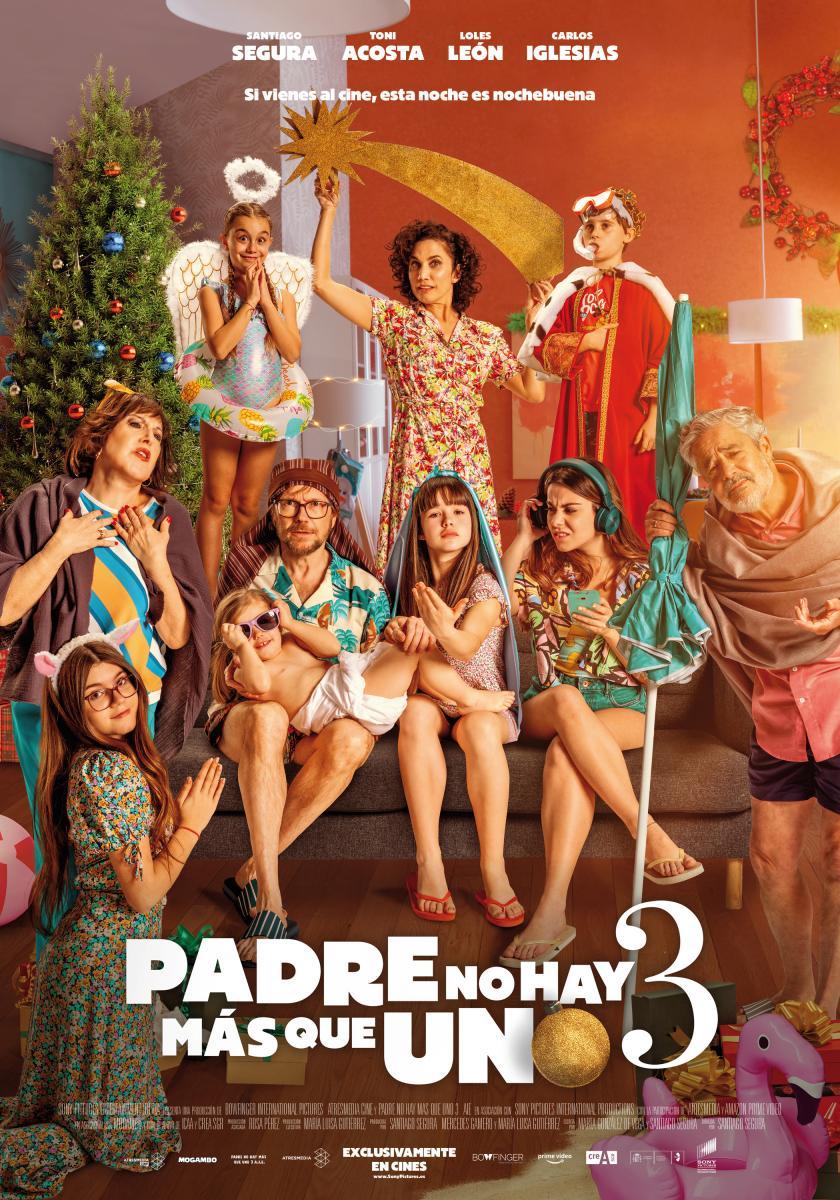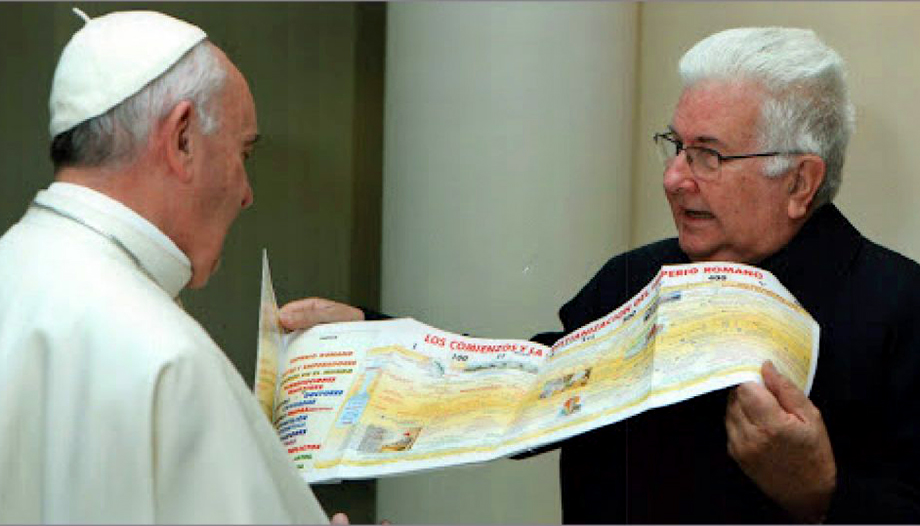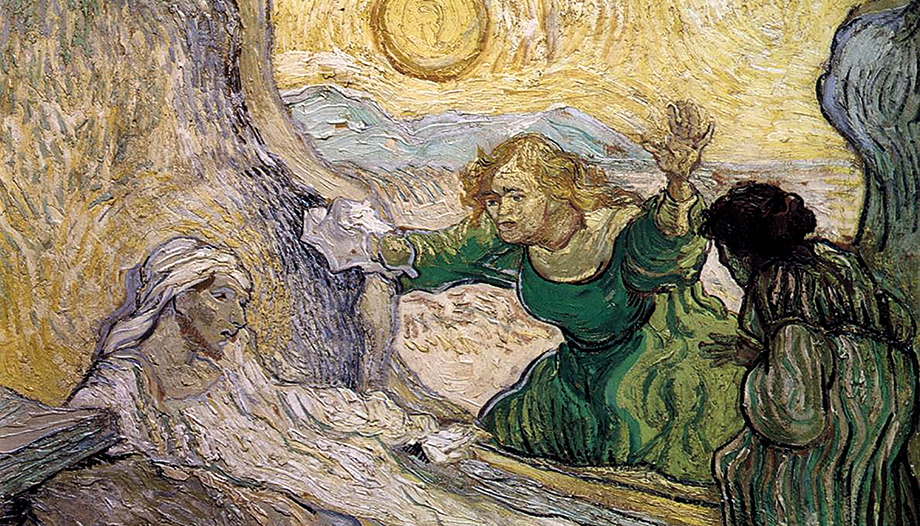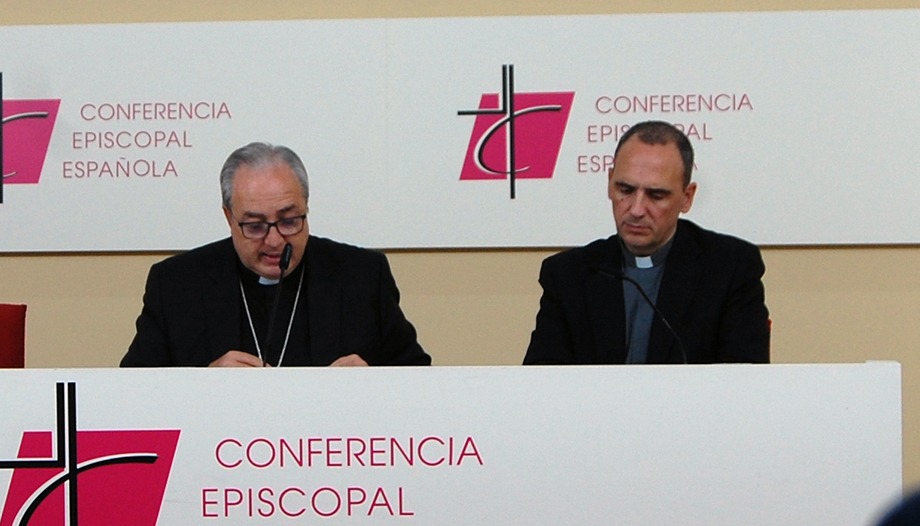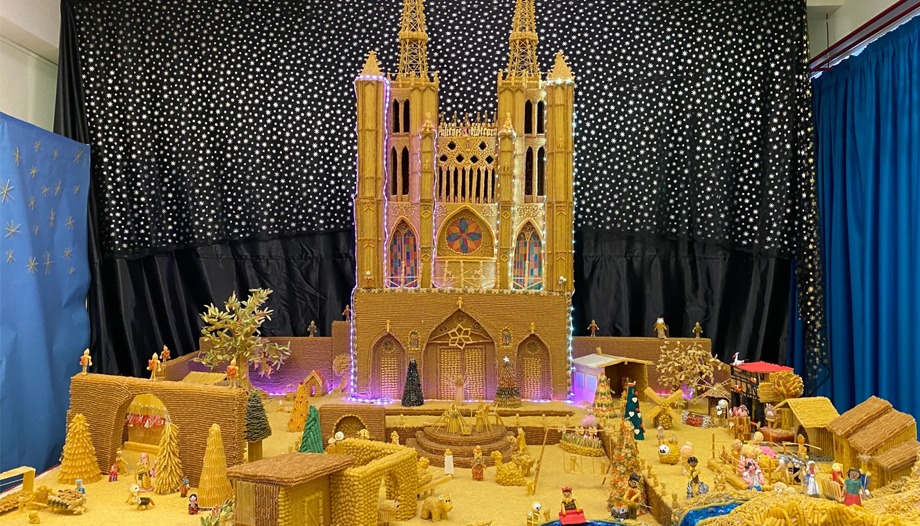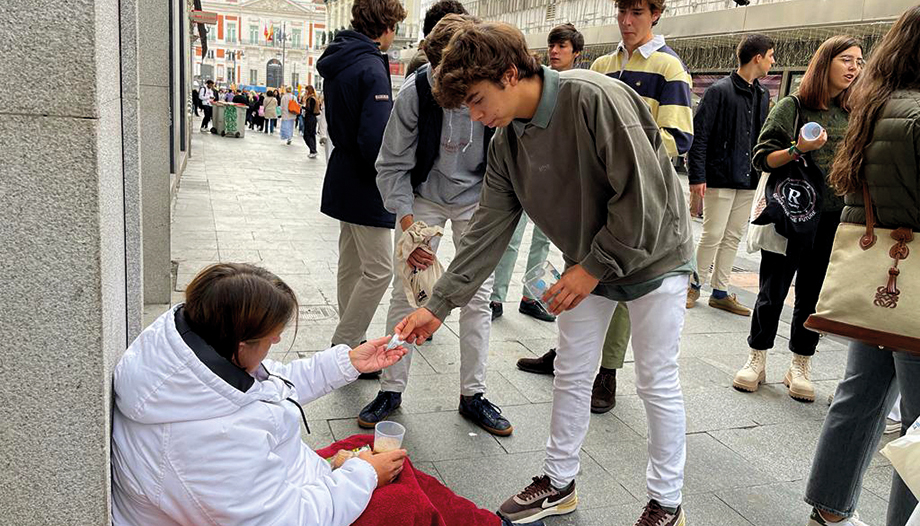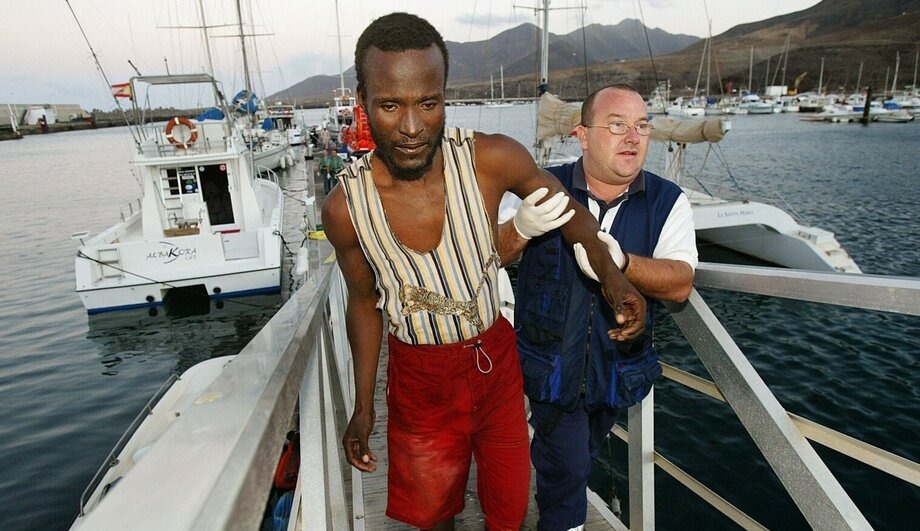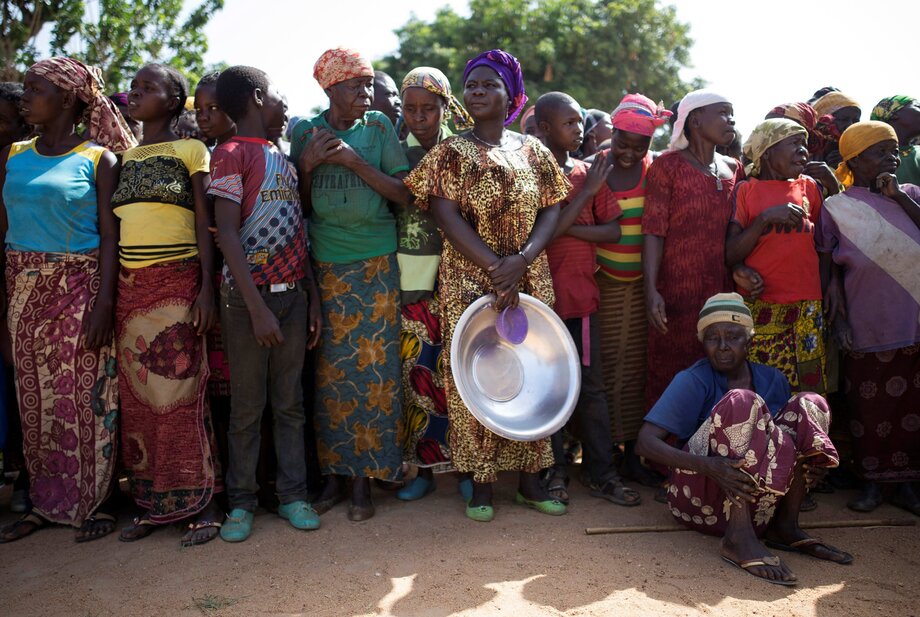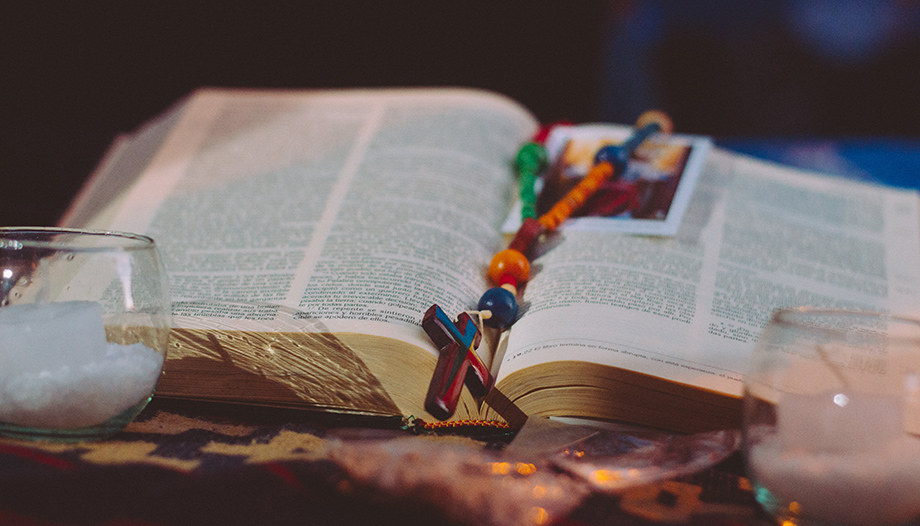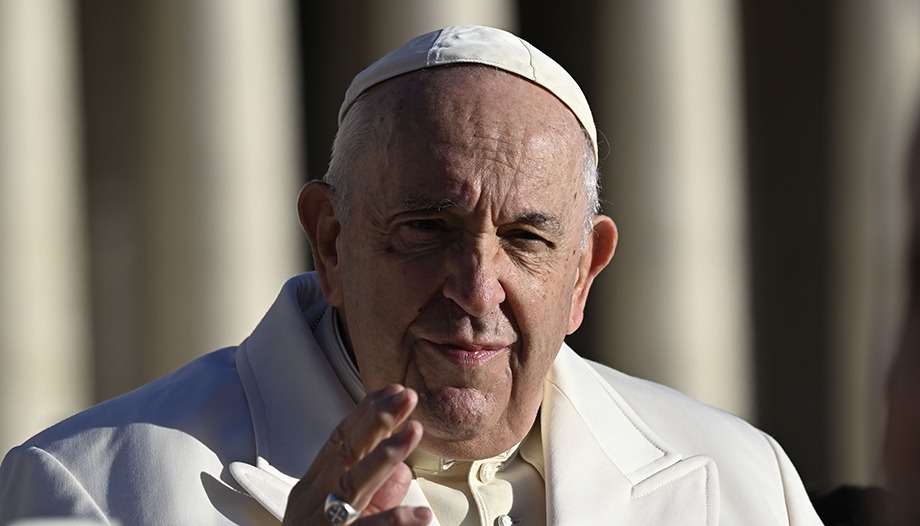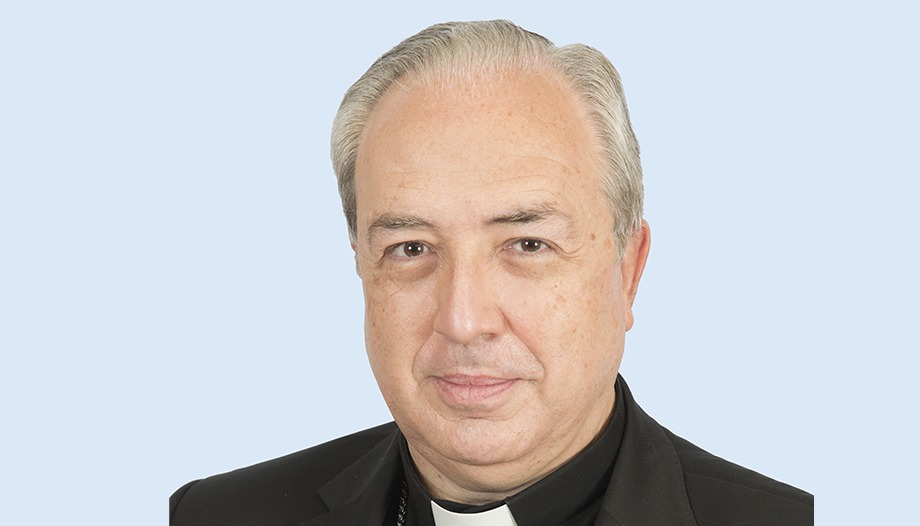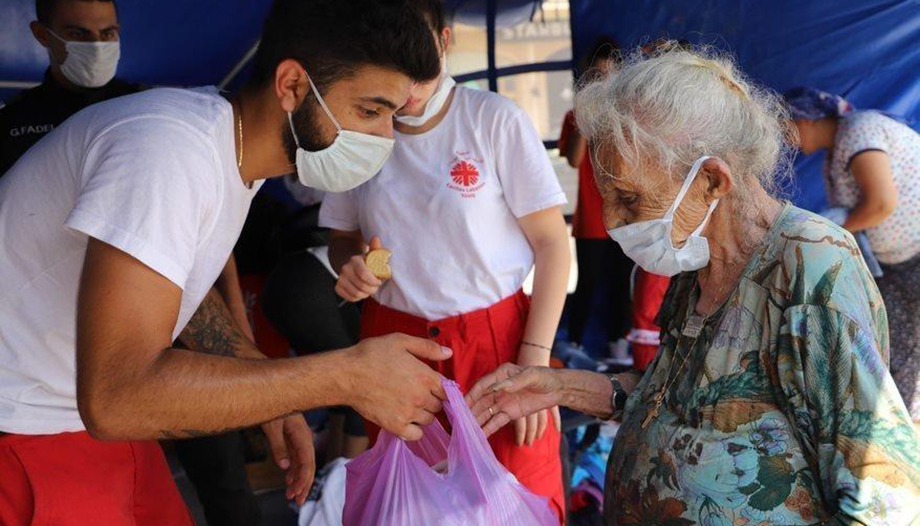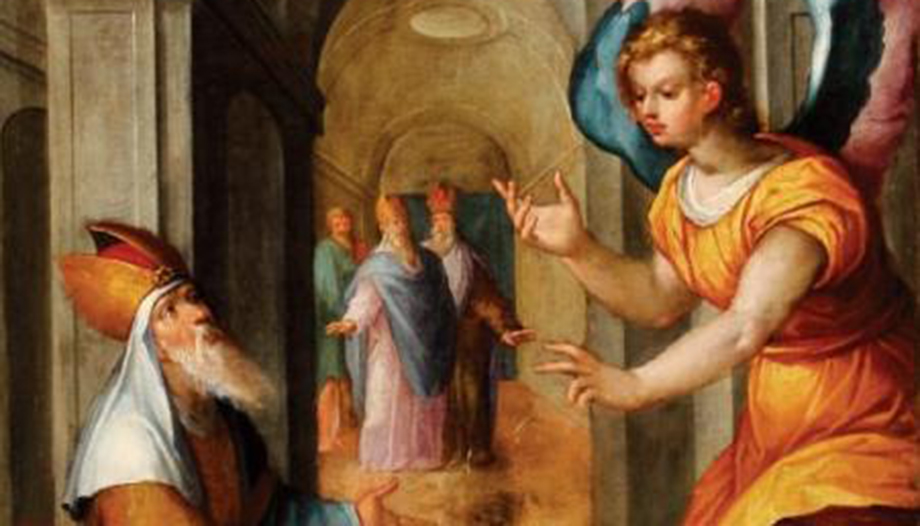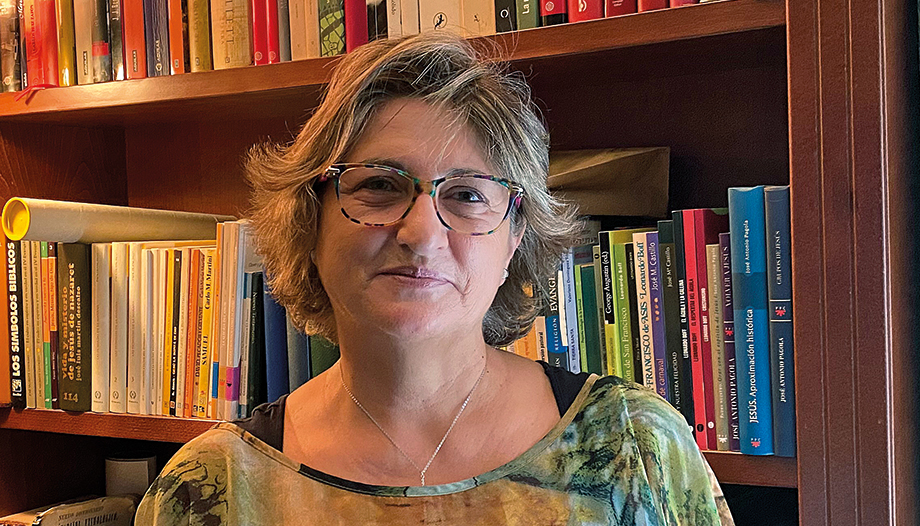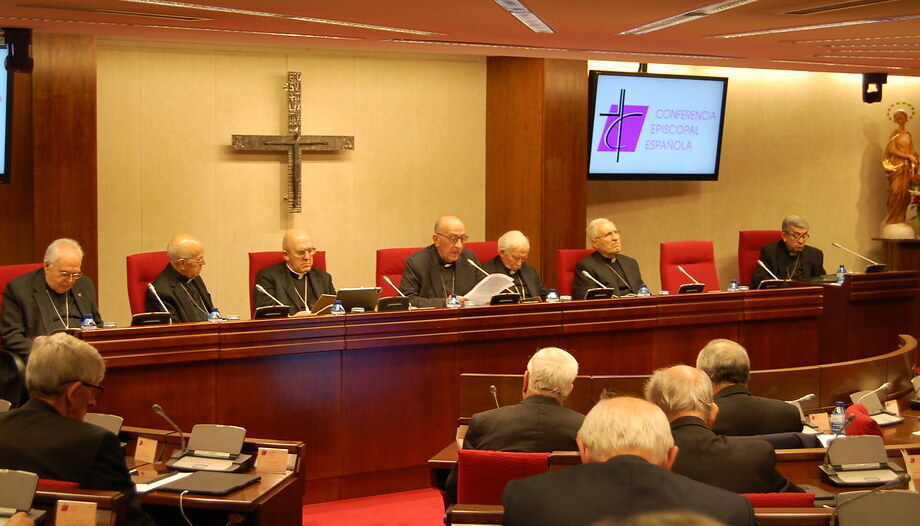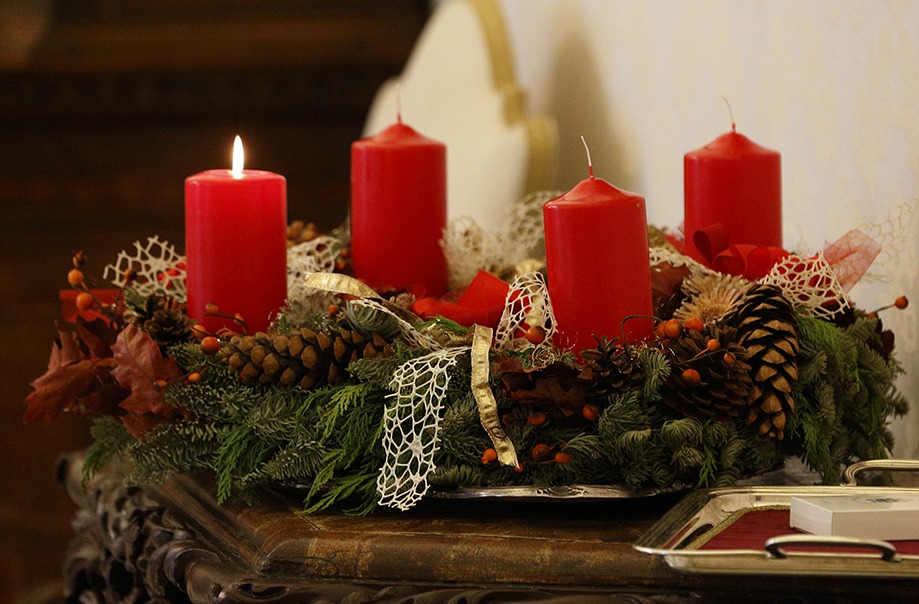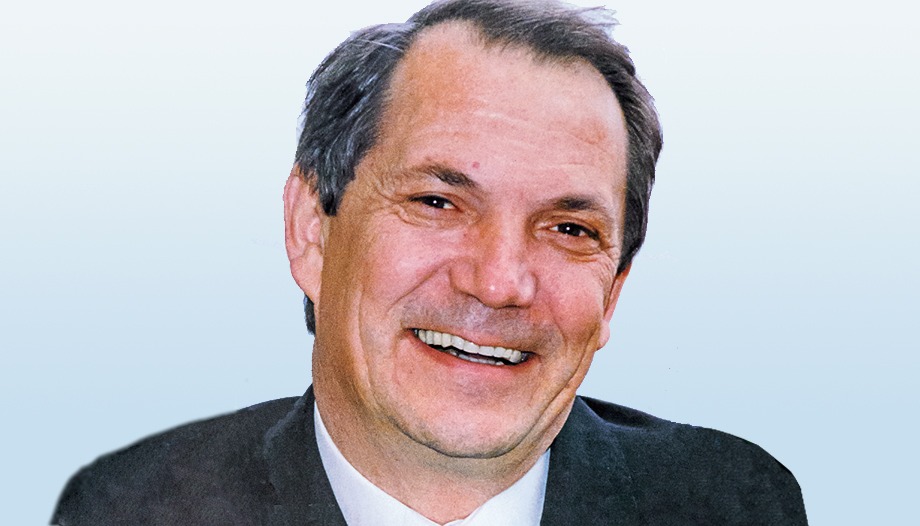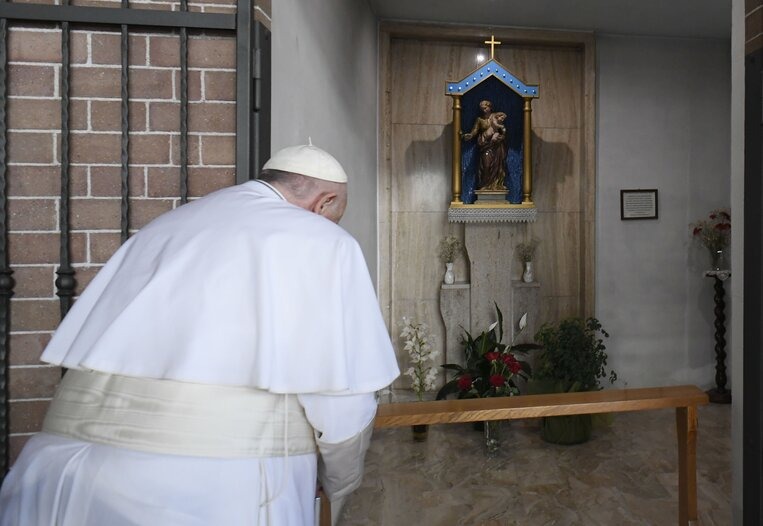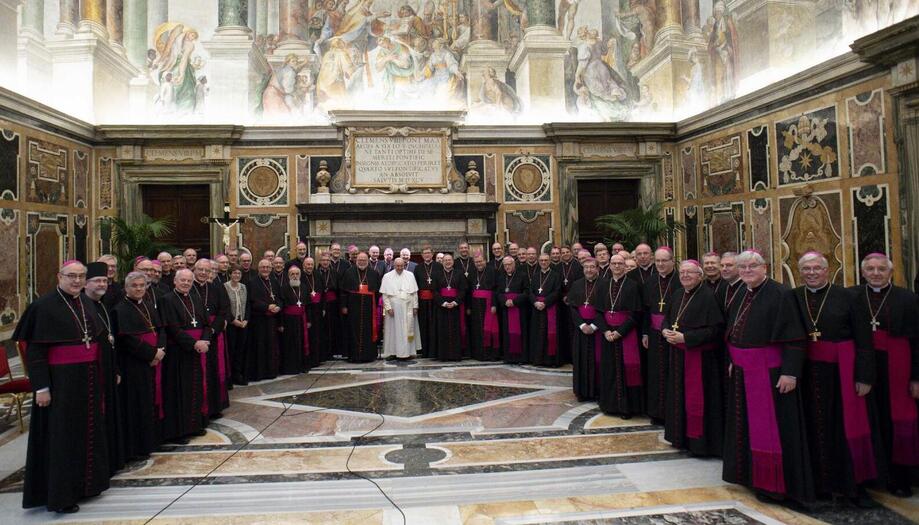Latin America is on the move. But how can we better understand the diversity of its ecclesiastical institutions and the interaction between them? What is the relationship between the Second Vatican Council, Aparecida, Brazil (5th General Conference of the Latin American and Caribbean Episcopate) and the Latin American and Caribbean Episcopate? Evangelii gaudium, Laudato si'REPAM, the Amazon Synod, Fratelli tuttithe CEAMA, the upcoming Synod on Synodality and the reform and renewal proposed by the Praedicate evangeliumWhy is there a need for new ministries and an Amazon Rite?
We spoke with Mauricio López. This 45-year-old Mexican living in Quito (Ecuador) is the lay vice-president of the recently created CEAMA-Amazonian Ecclesial Conference, whose statutes have just been approved by Pope Francis.
Mauricio began his career in Caritas Ecuador, accompanied the creation of REPAM-Pan-Amazonian Ecclesial Network (2014) that prepared and accompanied the challenges of the region and the subsequent celebration of the Synod for the Amazon (2019), promoted the Ecclesial Assembly of Latin America and the Caribbean (2021) within CELAM-Latin American and Caribbean Episcopal Council and is also a member of the Dicastery for the Service of Integral Human Development and participates in the Synod of Synodality where he was part of the Methodological Commission and today coordinates the working group of Latin America.
He sees all his evolution as a process and that the Spirit leads him to help where more gaps have been discovered in the ecclesial process and it is there where he seeks and provides more tools to make experience. When we call him a "listening expert", he denies it, but he emphasizes that "listening" is a fundamental element for discernment and that community discernment is an instrument that could seem connatural to the essence of the Church, but unfortunately it is not.
In short, Mauricio Lopez is one of the people who can help us shed light on all these questions and clarify what is happening in Latin America and how the dynamics of this region are influencing the day to day life of the Church in the times of Pope Francis.
We get a little lost with so many acronyms and institutions: CELAM, REPAM, Ecclesial Assembly, CEAMA... A council, a network, an assembly and a conference Can you clarify for us what they are and what each one is for?
-If one wants to understand the institutional framework of Latin America, one gets lost and in a certain way the confusion is premeditated because there is a need for change in the pastoral model. But if it is seen as an ecclesiological dynamism that was born in the Second Vatican Council, it is better understood. The essential thing is that we start from the territorial dimension, an incarnated church, that listens, that discerns communally. The temptation is to create mega-bodies, heavy with very effective functions, but without so much discernment and listening.
People do not know that the Latin American Episcopal Conferences were attended with a pre-prepared document. But in Aparecida (2007) what happened was that the document that was prepared did not respond to the signs of the times. The head of the drafting team, Cardinal Bergoglio, did something very courageous together with another group of people, among them Cardinal Cláudio Hummes, and abandoned the security of the existing document to open a space for listening, dialogue and joint construction. Then came Evangelii gaudium (2013) with a pastoral reform in which a Latin American stamp can be seen. And that is the starting point. Then comes Laudato si' (2015) which also opens a whole new door for the Church: commitment to the socio-environmental challenge. One crisis, not two.
And the Amazonian Synod was convoked where three points were united: the fragility of the territory, the need for a different pastoral and the socio-environmental urgency of the peoples. In other words, Amazon, Evangelii gaudium y Laudato si'integrated. The Amazon becomes "a testing ground for the Church": an expression of periphery, of theological place and of a pastoral experience so fragile that it called for an urgent change.
The Pan-Amazonian Ecclesial Network (REPAM) was born to try to articulate all the dissociated and fragmented presences in the territory. It was never intended to be institutionalized. Its main richness was to put in dialogue already existing structures of the Church, a difficult, complex communion, woven at the point of dialogue. The co-founding of REPAM was very important: CELAM, CLAR, Caritas and the indigenous pastorals. It was the possible and necessary step that allowed to purify in order to listen well and to discern and 22,000 people were listened directly and 65,000 in preliminary phases. Furthermore, REPAM responds in an agile and flexible way to territorial challenges such as: human rights, accompaniment of indigenous peoples, advocacy, communication and training. If REPAM were to lose its original vocation, it would have to disappear.
The Synod posed structural challenges and its final document had about 170 actions to be taken, which, if we summarize in 60, REPAM could undertake about 10 or 15, CELAM, another eight or ten, CLAR ten of them. Caritas, the same. But there was a large segment that was not possible to undertake from any of these structures and that is where we saw the need to create the CEAMA (Ecclesial Conference of the Amazon).
What is CEAMA and what will be its first steps? According to what you have explained, its creation is an expression of the "spirit of renewal and reform in a synodal key". Why couldn't CELAM face these challenges?
-The novelty of the CEAMA is in his name. It is "Conference" which is the highest degree of structure that can exist in a region in the ecclesial sphere and implies a degree of essential authority to be able to interact with the Vatican and with the episcopates. Second, it is "Ecclesial", it is not episcopal, it is not the competence of CELAM or a region of CELAM, because CELAM is the council of the bishops and in this sense a "conference" has greater capacity to influence the ecclesial structures below it. A "council" is consultative, orientative and offers support. A "conference", however, has a degree of intervention, authority and responsibility in the areas in which it acts. For example, CELAM cannot tell an episcopate what to do, but it can advise, listen and offer tools and instruments, it creates spaces, etc. The "conference" can.
In addition, CEAMA faces more complex long-term processes that require institutionalization, such as, for example, the creation of a new Amazon Rite, which could take 20 years. And to do it well and weave it from the cultural identity of the territory, time is required. And the other novelty is that it has been created for a specific territory which is "Amazonia", which is a theological place, as the Pope said in "Dear Amazonia" and it is the way to carry out some of the dreams.
How is CEAMA structured? The Presidency has an ecclesiological novelty. The president is a cardinal, the Cardinal Barreto, a vice-president who is Cardinal Leonardo Steiner and a lay vice-president, in this case myself. And there will be two more lay vice-presidents, a religious woman who is not an ordained minister and another lay indigenous woman. And then an Ordinary Assembly in which each country or Episcopal Conference and each community will be represented equally with: bishop, laymen and laywomen, religious men and women and people of the territory.
We can think especially of these first steps: the Amazon Rite has to do with incorporating values, elements, symbolisms, aspects proper to the varied cultures of the Amazon and thus enriching the symbolic aspect of the Church and responding more closely to the need for mystery, ecclesial sense and religious vision of this territory. If I am not mistaken, the new Amazon Rite will be number 24.
The second step is the new ministries in the Amazon: ordained and non-ordained, with all their complexity, since they must be supported, accompanied and formally put into dialogue with the local episcopates, which will implement them.
And the third, the creation of an Amazonian University Program, a very big assignment that Cardinal Hummes had, because he had the intuition that it could generate structural changes. And to add something else, he will also address the issue of ecological sin and how to solve it. All this needs CEAMA and no other Latin American or Pan-Amazonian institution could do it.
Explain to us more about the new Amazonian rite. What does it consist of and why is it necessary to promote it? Do you think that its creation could be opposed by anyone?
-Sometimes we are not very catholic, because catholicity means "universality", it is the proclamation of the Gospel to all peoples, a richness. Let us not be afraid, no one wants to impose anything on anyone, but from here we want to express that the richness of our identity has something to contribute and we want to live it. In the discernment made in the Synod of the Amazon it was clear and we saw how many people are moving away because they do not feel accompanied and there is no one to administer the sacraments. That is why this rite is necessary because it is the way to make the experience of the encounter with the Lord Jesus in the Eucharist and in the whole experience of faith and of the Church much closer, affectively, effectively, symbolically and ritually, so that it comes closer to the particular reality of the people. And it is not just a matter of small changes in the liturgy with a few songs in the indigenous language and with indigenous musicality. It is a restructuring of the whole celebratory aspect so that the Eucharist, being the center, has a living dynamism that sustains it from its own culture. And in the liturgy, obviously, there are aspects that will not be touched: the consecration formula and who consecrates, for example. But it is a matter of incorporating and valuing a whole worldview.
Why is Pope Francis so supportive of all this Latin American dynamism, do you think it has to do with the fact that the Pope is Argentinean and that in the Jesuit spirit the question of discernment and listening and the upcoming Synod of Synodality is so marked?
-Not only Latin America, we also see other dynamisms coming from Africa that will surely become very evident in the coming years, or Asia and its example of intercultural dialogue in a fragmented world and from the minority. But yes, it is true that Latin America is at a propitious moment where its history, its life, its processes and its contributions are contributing strongly to this particular moment. That said, it would be a reductionism to say that this is because the Pope is Latin American. Obviously we are all marked by our culture and history. But what also happens is that Latin America is the region that with more strength, clarity, excesses and extremes (we are not idealizing), appropriated the Second Vatican Council. In short, all this has nothing to do with the ten years of Pope Francis' papacy but with the 60 years of the Second Vatican Council.
As for the Synod of Synodality, I perceive in the regional differences, a great difficulty to make a true exercise of discernment, with everything pre-elaborated and with great tension. And when the positions are already pre-established, the tension cannot be creative. However, when differences enter into discernment, it grows. For example, Latin America, Africa and Asia are full of tensions, but they are creatively developed and allow us to move forward. But tension, when it is not creative, does not allow you to move forward. What takes life away from the Church are those poles in tension, from particular ideologies that hijack the space for genuine discernment. And I am sorry if some do not agree, but documents do not matter if they do not have life and are not incarnated. If synodality does not become a discerned experience, differences that allow us to recognize and feel part of a church, to love and respect each other, or at least not to destroy each other...if it is not like that, it does not make sense. It is not about winning a position and putting my thoughts in the document. I experienced this in the Amazon Synod, in the Ecclesial Assembly of Latin America and the Caribbean, and I am seeing it in the Synod of Synodality.
In the case of Spain, we see a healthy, significant, positive contribution. We see that the path being taken by Portugal, Spain and, to a certain extent, Italy is more in-depth, discerning and listening. And hopefully it will help other regions that are polarized.
Finally, what are the main threats and challenges facing Latin America today? I see pain, wounds like Nicaragua, Venezuela. I see the suffering and lack of development in Honduras, Guatemala, Salvador and Bolivia. And of course, I see Haiti. I see great suffering and lack of solutions. I see right-wing and left-wing populisms, totalitarianisms. Some speak of new forms of communism. And I see the sects, the aggressive and sectarian ways of some religions that gain followers based on corruption.
-I agree with you on these pains. As far as threats are concerned, I believe that the great structural sin of our times, not only in Latin America, is inequity and hoarding, which produce greater poverty and socio-environmental crisis. And the most terrible and shameful expressions of anti-democratic and ideological government models have to do with this inequity, control and throwaway culture.
The second threat is the impoverishment of our Latin American democracies with the polarization of tendencies. Again this is not only in Latin America, it occurs in other latitudes, but little space is being left for reconciliation and consensus and this is very serious, because it is linked to the way in which people are dragged to irreconcilable positions and it is not a matter of having an "aseptic neutrality" but of building a long-term reality of the people and with the people. And the third threat, at the ecclesial level, is the irrelevance of the experience of faith and mystery, surely due to our own sins of clericalism and exclusion of lay people, women, ...
The challenges would be along the same lines. In the ecclesial sphere, to live synodality as a daily experience and experience, to believe in it so that any structure or document is the fruit of and is sustained by this shared listening and discernment. Politically, the challenge would be for the Church to have a voice, but a discerned voice so as not to politicize our presence, but to help with ethical criteria, with denunciation and proclamation and looking to the long term. Finally, there is the question of the fight against poverty and its structural causes. A poverty that is also associated with nature, because the Pope says when he is asked "Who is the poorest of the poor? It is our sister mother earth", that is to say, the challenge is to fight against poverty and to take care of it, but bearing in mind the socio-environmental crisis. As you can see, everything has to do with what we started this conversation with, with those processes we are living. In this case with: Evangelii gaudiumLaudato yes'., Fratelli tuttithat is to say: socio-environmental justice, another policy welcoming the diverse, the migrant and with a preferential option for the impoverished.
The authorMarta Isabel González ÁlvarezD. in journalism, expert in institutional communication and Communication for Solidarity. In Brussels she coordinated the communication of the international network CIDSE and in Rome the communication of the Dicastery for the Service of Integral Human Development with whom she continues to collaborate. Today she brings her experience to the department of socio-political advocacy campaigns and networking of Manos Unidas and coordinates the communication of the Enlázate por la Justicia network. Twitter: @migasocial 










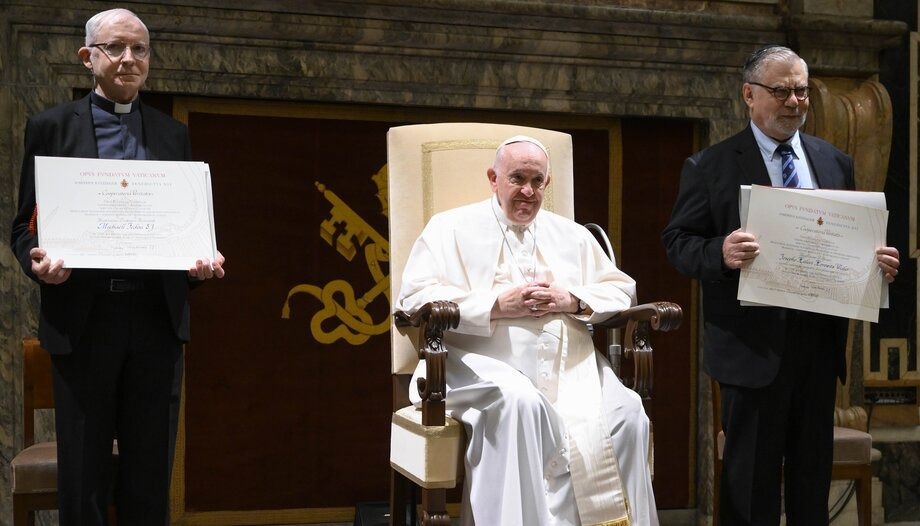
 Joseph WeilerWe see the consequences of a society full of rights but without personal responsibility".
Joseph WeilerWe see the consequences of a society full of rights but without personal responsibility".